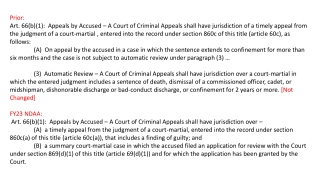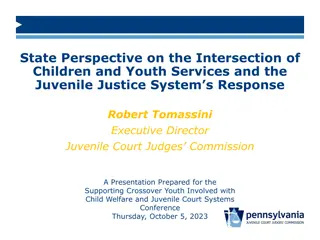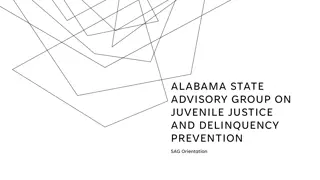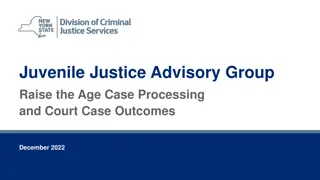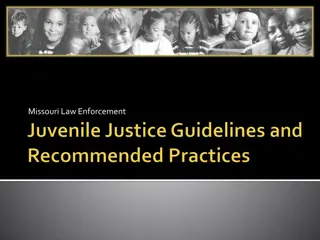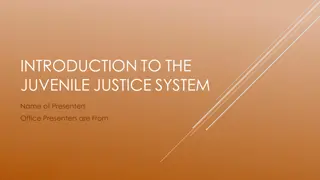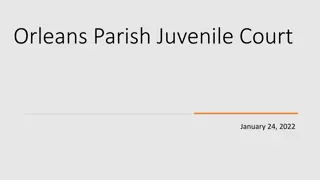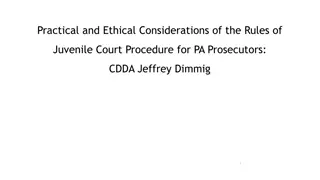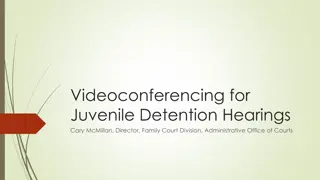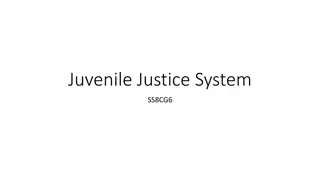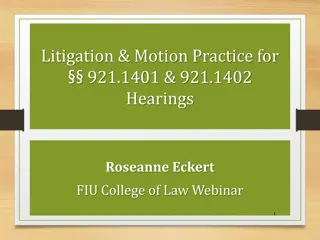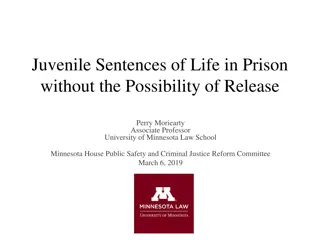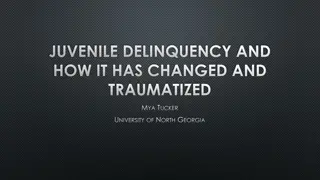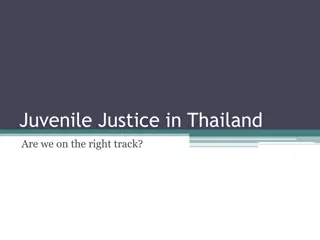Reforming Electronic Monitoring in Juvenile Court: A Human-Centered Approach
Research findings emphasize the harmful impact of incarceration on juveniles, advocating for lighter supervision for low-risk youth and prioritizing pro-social activities for rehabilitation. The current GPS and probation rules reflect a standardized approach that may limit individualized support. Case studies highlight the varied trajectories of youth involved in the juvenile justice system, raising concerns about addressing their unique needs and challenges effectively.
- Reforming Juvenile Justice
- Electronic Monitoring
- Rehabilitation
- Pro-Social Activities
- Youth Advocacy
Download Presentation

Please find below an Image/Link to download the presentation.
The content on the website is provided AS IS for your information and personal use only. It may not be sold, licensed, or shared on other websites without obtaining consent from the author. Download presentation by click this link. If you encounter any issues during the download, it is possible that the publisher has removed the file from their server.
E N D
Presentation Transcript
REFORMING ELECTRONIC MONITORING IN JUVENILE COURT Catherine Crump Samuelson Clinic for Law, Technology and Public Policy UC Berkeley Law Kate Weisburd East Bay Community Law Center UC Berkeley Law Laurel Arroyo Public Defender s Office Alameda Co.
Research shows: 1. Incarceration, even if brief, is harmful and disruptive. 2. The lightest form of supervision is best for low-risk youth. 3. Pro-social and pro-familial activities are critical for any rehabilitation effort. 4. Kids are different.
GPS & PROBATION RULES: Average: 41 separate rules.
HOW GPS OPERATES IN PRACTICE -House arrest -Pre-approval for anything other than school (hair cut, job interview, family social events) -48 hour preapproval process Call GPS officer, GPS calls PO, GPS calls you back. -Charging at the same time every day -One size fits all no tailoring to individual children -Rules limit pro social activities and after school activities (sports etc)
T.J. Age 16, African-American T.J. attends school regularly, enjoys running, basketball, skateboarding, making music and spending time with his girlfriend. Oct. 2017: Arrested and detained at juvenile hall for stealing a laptop from school.
The trajectory of T.L.s case: Days on GPS: 117 Days on Home Sup.: 36 Days in custody: 21 +
L.J. Age 15, African-American Enjoys swimming, involved with Mentoring Center, Kaiser Drug Counseling, applied for Youth Radio internship, and in YEP job training. LJ is also undergoing month long evaluation for special education services. July 2017: Placed on probation for attempted robbery, stealing a cellphone. Victim was not injured.
J.L. Age 15, African-American Placed on probation for theft of a backpack. Struggles in school with learning disabilities that are unaddressed by Oakland Unified. Lives in small house with immediate and extended family. Loves sports, esp. basketball. Involved with YEP.
Common themes weve seen: Frequent detention & worse outcomes Additional time on GPS and probation Cumulatively, children spend months on GPS House arrest prevents pro-social and familial activities Depression and anxiety exacerbated Increase in family stress and tension Pressure on single parent homes Problems with technology Difficulty with pre-approval process Challenging for children to understand rules One size fits all Rules not adapted for adolescent development, or children with disabilities.
Race of youth in hall and on GPS
WHAT DO WE KNOW ABOUT THE PREVALENCE OF GPS IN JUVENILE COURTS IN CA? 10,000 youth on GPS in CA last year. Five biggest users of electronic monitoring: Los Angeles County (2,514 youth) Fresno County (1,169 youth) Orange County (800 youth) Sacramento County (688 youth) Alameda County (424 youth)
Most counties use some form of electronic monitoring. But there are a few counties that do not use electronic monitoring on youth. Some counties allow youth on GPS to move more freely than youth on GPS in Alameda County. Many counties do not require 48 hours pre-approval for movement outside of the home. Alameda County is only county requiring youth to charge their device at the same time every night.
Where do we go from here? #1: Recommendations #2: New Rules
RECOMMENDATIONS: 1. Out-of-custody supervision levels should be imposed incrementally, GPS should be recognized as the most restrictive level. (train intake probation officers) 2. When GPS is imposed, the restrictions that accompany GPS should be individually tailored to the needs of each child. See Lent.
3. GPS should rarely be used for youth with cognitive or intellectual disabilities. 4. Pro-social or family activities should be presumptively permitted. 5. Rules and logistics should be simplified. 6. Lengthy time on GPS is presumptively unreasonable. 7. Intensive GPS should be viewed as custody time.
8. Detention should be last resort as response to GPS violation. 9. Improved GPS reports for court - include total days on GPS and incarcerated since being placed on probation. 10. GPS. Probation should collect and report data on


